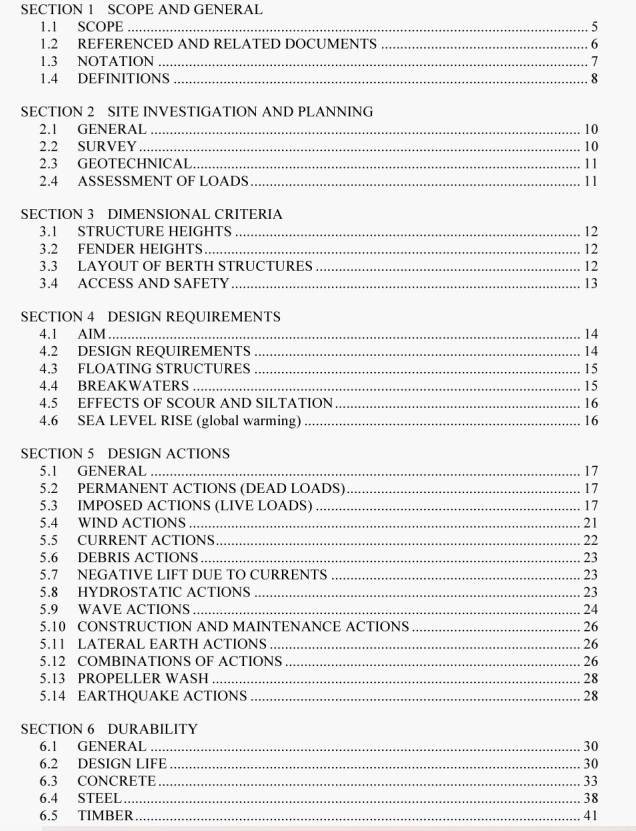AS 4997:2005 pdf – Guidelines for the design of maritime structures.
3.4 ACCESS AND SAFETY
3.4.1 Application
For maritime structures that may fall outside the provisions of relevant building codes or other regulations. the guidelines in Clause 3.4.2, 3.4.3, 3.4.4 and 3.4.5 should be followed.
3.4.2 Access for operational, inspection, maintenance and servicing personnel
Where access to structures is required for operational, inspection and maintenance personnel, the structures should comply with the requirements of AS 1657.
Ramps or sloping surfaces should not be located in the tidal zone (where marine growth can make them slippery). Where slopes are required below high water mark, access should be provided by way of a series of horizontally surfaced steps let into the slope, proud of the slope, or cleats fixed to the surface at maximum 300 mm centres. Appropriate non-slip surfacing should be provided.
3.4.3 Access to public transport facilities
Where access is required to public transport facilities, structures should comply with the req uirernents of the Disability Standards for Accessible Public Transport.
Gradients of gangways (hinged ramps attached to floating structures, whose gradients varies with the tide) should not exceed I in 8 when the tide is at LAT, or steeper than I in 12 for more than 20% of the time.
3.4.4 Safety fencing
In general, wharf faces and the like are not provided with safety or other fencing to prevent persons or vehicles from falling off the edge of a public access structure. Such fencing would hinder the normal operation of the wharf or maritime facility. Edge kerbs may be considered in areas generally used by wheeled vehicles.
Where access to the water or vessels is not required and where a person falling from the structure is likely to fall more than 1.5 m to strike a hard surface or the seabed, a guardrail (handrail) in accordance with AS 1657 should be provided.
3.4.5 Safety ladders
Where persons who fall from a wharf or maritime facility would not be able to easily regain the shore, safety ladders should be provided. Such ladders should be of durable material and extend from deck level down to below low water level—bottom rung should be 300 mm below LAT. Such ladders should be located at maximum 60 iii intervals.
Where safety ladders are used to provide access to craft, suitable buffer rails, at least 250 mm proud of the ladder, should be provided each side to prevent vessels crushing persons on the ladder.
4.1 AIM
The aim of the design of maritime structures covered by this Standard is to provide structures that are stable, have adequate strength against ultimate conditions and remain serviceable
while being used for their intended function, and which also satisfy requirements for robustness, economy and ease of construction, and are durable (low maintenance and low repair costs).
AS 4997:2005 pdf – Guidelines for the design of maritime structures
